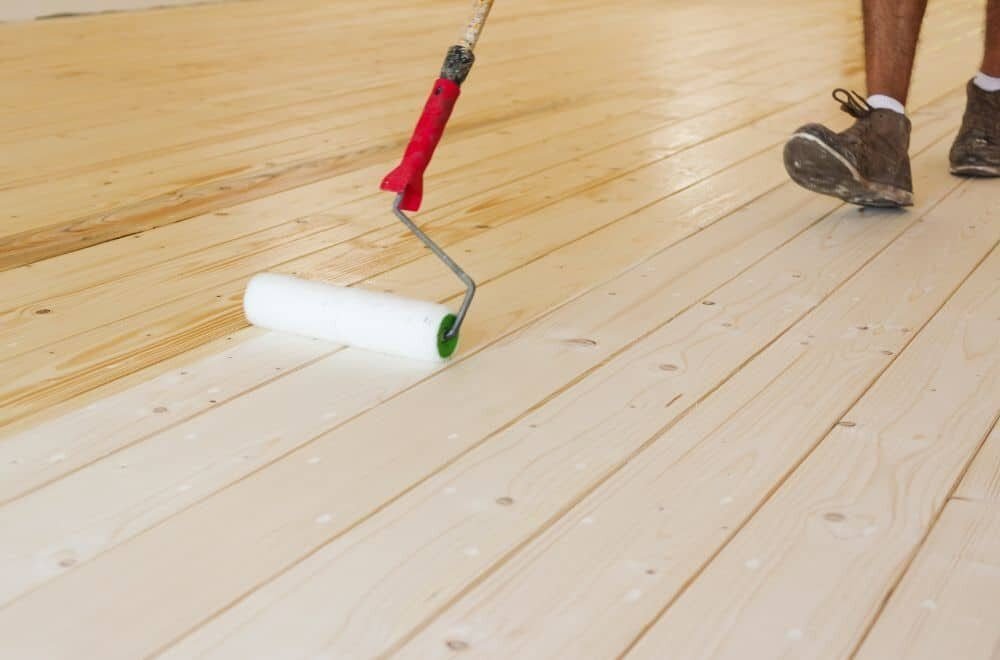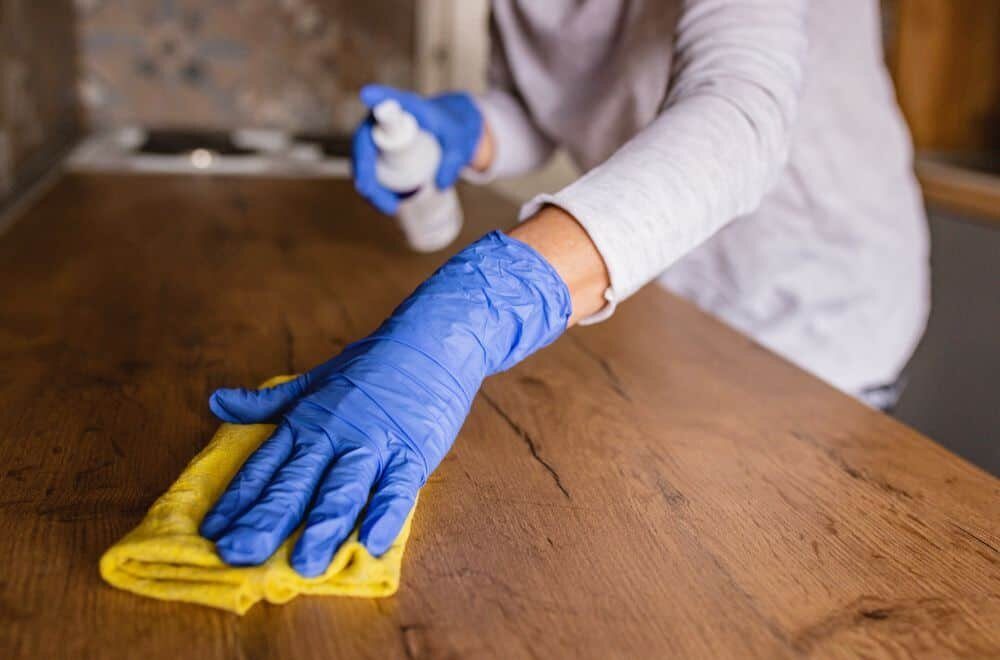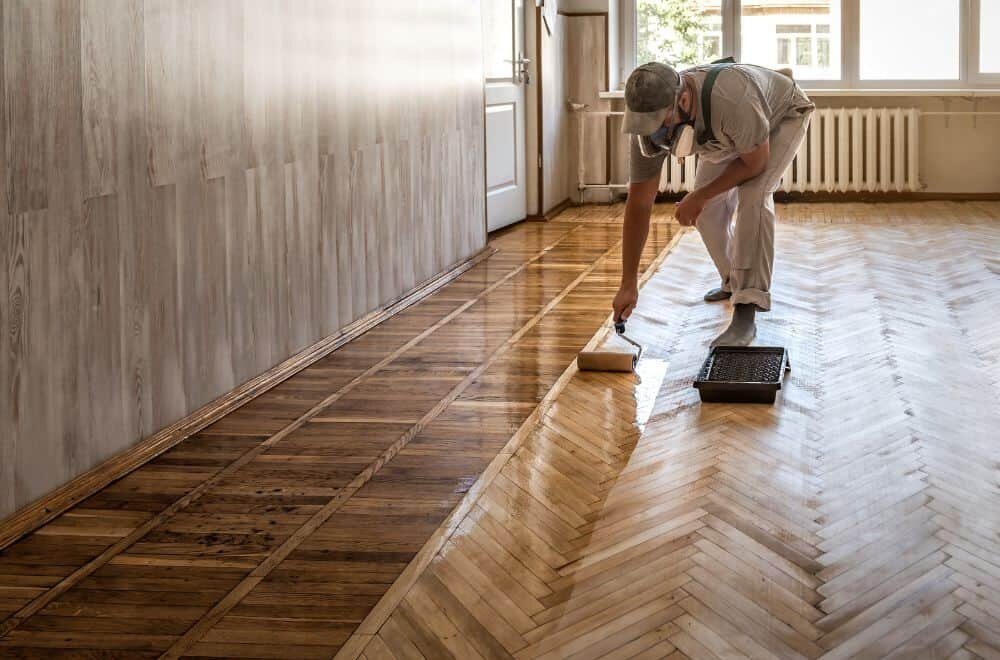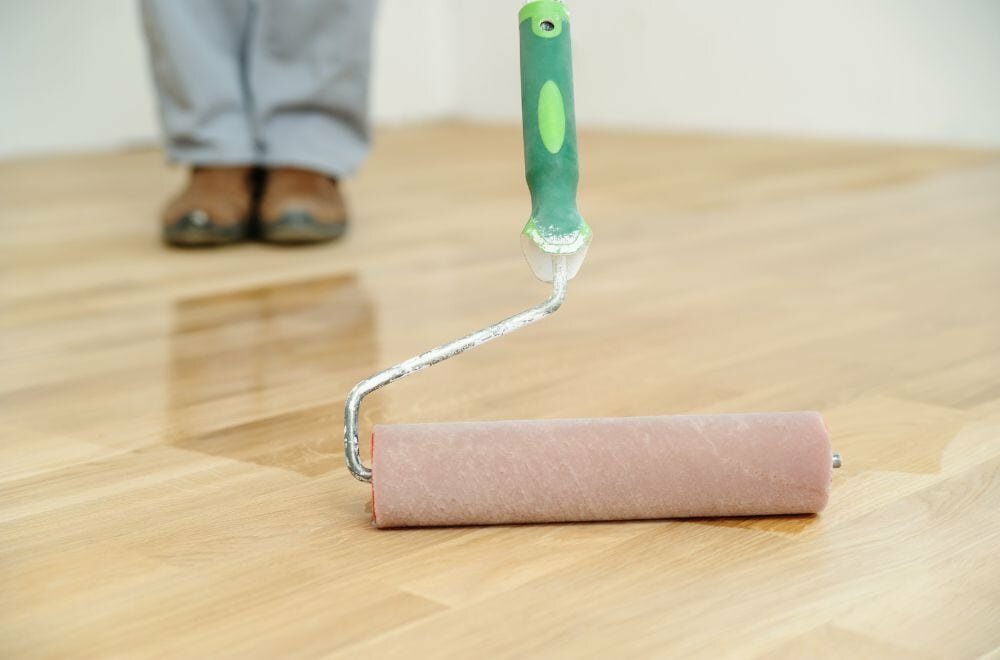Lacquering over painted wood can be a daunting task, but with proper preparation and technique, you can achieve a beautiful and long-lasting finish. Whether you’re looking to revitalize an old piece of furniture or add a glossy finish to a new project, lacquer can be a great option. However, it’s important to note that not all paints are compatible with lacquer, so it’s crucial to choose the right type of paint and lacquer for your project.
Before you begin, make sure the painted surface is clean and free of any dirt, dust, or debris. Sand the surface lightly to create a rough texture that will help the lacquer adhere properly. If there are any cracks or holes in the surface, fill them in with wood filler and sand them down until they’re smooth. Once the surface is prepped, you can apply a coat of lacquer using a spray gun or brush, depending on your preference. It’s important to apply thin, even coats and allow each coat to dry completely before applying the next.
Understanding Lacquer and Paint
When it comes to refinishing painted wood, lacquer is a popular choice due to its durability and ability to provide a strong, shiny finish. However, it’s important to understand the basics of both lacquer and paint before attempting to apply one over the other.
Basics of Lacquer
Lacquer is a type of finish that is commonly used on wood and metal surfaces. It’s a clear, protective coating that provides a hard, glossy finish. Lacquer is typically applied in thin layers using a spray gun or brush, and it dries quickly.
One of the benefits of lacquer is its durability. It’s resistant to scratches and wear, making it ideal for high-traffic areas. It also provides a smooth, even finish that enhances the natural beauty of the wood.
Basics of Paint
Paint is a mixture of pigments, binders, and solvents that is used to color and protect surfaces. It’s available in a wide range of colors and finishes, from matte to high gloss.
When painting over wood, it’s important to choose the right type of paint. Latex-based paints are the best option for applying lacquer over painted wood, as they provide a good base for the lacquer to adhere to. Oil-based paints, on the other hand, can cause issues with adhesion and should be avoided.
In addition to the type of paint, the condition of the painted surface is also important. The surface should be clean, dry, and free of any loose or flaking paint. Any imperfections should be sanded and filled before applying lacquer.
By understanding the basics of lacquer and paint, you can ensure that you’re using the right materials and techniques to properly lacquer over painted wood.
Importance of Properly Lacquering Over Painted Wood

If you want to protect your painted wood surfaces and give them a glossy finish, lacquering over them can be a great option. However, it is important to do it properly to avoid any issues. Here are some reasons why it is important to properly lacquer over painted wood:
Improves Durability
Lacquer is a hard, durable finish that can protect your painted wood surfaces from wear and tear. When applied properly, it can make the surface more resistant to chipping, fading, and other types of damage. This can help extend the life of your painted wood surfaces and save you money in the long run.
Enhances Appearance
Lacquer can give your painted wood surfaces a glossy, professional-looking finish. This can make them look more attractive and add value to your home or business. Additionally, lacquer can help bring out the natural beauty of the wood grain, making your surfaces look even more appealing.
Provides Easy Maintenance
Lacquered surfaces are easy to clean and maintain. They can be wiped down with a damp rag or a spray-and-wipe furniture polish. However, it is important to avoid using cleaners containing ammonia, bleach, alcohol, or acetone, as they can damage the lacquer finish.
Offers Versatility
Lacquer can be applied to a variety of painted wood surfaces, including furniture, cabinets, and floors. It can be used on both indoor and outdoor surfaces, making it a versatile option for many different projects.
In summary, properly lacquering over painted wood can improve durability, enhance appearance, provide easy maintenance, and offer versatility. If you want to give your painted wood surfaces a long-lasting, professional-looking finish, consider using lacquer.
Preparation Steps

Before you start lacquering over painted wood, you need to properly prepare the surface. This will ensure that the lacquer adheres well and provides a smooth finish. Here are the two main preparation steps you should follow:
Cleaning the Surface
The first step is to clean the surface thoroughly. Any dirt, dust, or grease on the surface can affect the adhesion of the lacquer. Here’s how you can clean the surface:
- Use a soft cloth or sponge and a mild detergent to clean the surface.
- Rinse the surface with clean water and let it dry completely.
- If there are any stubborn stains or marks, you can use a sandpaper or a degreaser to remove them.
Sanding the Surface
The second step is to sand the surface. Sanding will help the lacquer adhere better to the surface and also remove any imperfections. Here’s how you can sand the surface:
- Use a sandpaper with a grit of 120 or 150 to sand the surface.
- Sand in the direction of the wood grain to avoid scratches.
- Sand the surface lightly until it becomes smooth and even.
- Use a tack cloth to remove any dust or debris from the surface.
By following these preparation steps, you can ensure that the surface is clean, smooth, and ready for lacquering. This will help you achieve a professional-looking finish that is durable and long-lasting.
Choosing the Right Lacquer

When it comes to lacquering over painted wood, choosing the right lacquer is crucial. Not all lacquers are created equal, and using the wrong one can result in a poor finish or even damage to your painted surface. Here are some key factors to consider when choosing a lacquer for your project:
1. Type of Paint
The type of paint you used on your wood surface will determine the type of lacquer you should use. If you used oil-based paint, you should use a lacquer that is also oil-based. If you used water-based paint, you should use a water-based lacquer. Using the wrong type of lacquer can cause the paint to peel or crack.
2. Sheen
Lacquers come in a range of sheens, from matte to high-gloss. Consider the look you want to achieve and choose a lacquer with the appropriate sheen. Keep in mind that high-gloss finishes tend to show imperfections more easily than matte finishes.
3. Drying Time
Some lacquers dry faster than others, which can be an important factor if you are working on a time-sensitive project. Check the drying time of the lacquer before you buy it, and make sure it fits your needs.
4. VOC Content
Volatile organic compounds (VOCs) are chemicals that can be harmful to human health and the environment. Many lacquers contain VOCs, so if you are concerned about the impact of your project on the environment or your health, look for a low-VOC or no-VOC lacquer.
5. Application Method
Finally, consider the application method you plan to use. Some lacquers are designed for spray application only, while others can be brushed on. Make sure the lacquer you choose is compatible with your application method.
By considering these factors, you can choose a lacquer that will give you a beautiful, durable finish on your painted wood surface.
Applying the Lacquer

When it comes to lacquering over painted wood, the application process is crucial for achieving a smooth and durable finish. Here are the steps you need to follow to apply the lacquer properly:
Priming the Surface
Before applying the lacquer, you need to prime the surface to ensure that the lacquer adheres properly. To do this, you can use a sanding block to lightly sand the surface of the painted wood. Then, wipe the surface clean with a tack cloth to remove any dust or debris.
Once the surface is clean, apply a coat of primer using a brush or spray can. Make sure to choose a primer that is compatible with both the paint and the lacquer you plan to use. Let the primer dry completely before moving on to the next step.
Applying the First Coat
After the primer has dried, it’s time to apply the first coat of lacquer. Use a high-quality brush or spray gun to apply a thin, even coat of lacquer. Be sure to follow the manufacturer’s instructions for the lacquer you are using, as drying times and application methods can vary.
Sanding Between Coats
After the first coat has dried, use a fine-grit sandpaper to lightly sand the surface. This will help the next coat of lacquer adhere properly and create a smooth finish. Be sure to wipe away any dust or debris with a tack cloth before applying the next coat.
Repeat the process of applying a coat of lacquer, letting it dry, and sanding between coats until you have achieved the desired level of coverage and smoothness.
Applying the Final Coat
Once you have applied the final coat of lacquer, let it dry completely before handling or using the painted wood. It’s important to be patient during this process to ensure that the lacquer has fully cured and hardened.
Overall, with the right tools and techniques, lacquering over painted wood can be a great way to achieve a durable and attractive finish. Just be sure to follow the steps carefully and choose high-quality products for the best results.
Safety Measures

When working with lacquer and painted wood, it’s important to take necessary safety measures to avoid any accidents or health hazards. Here are some safety measures you should follow:
1. Work in a Well-Ventilated Area
Lacquer fumes can be harmful if inhaled in large quantities. Therefore, it’s important to work in a well-ventilated area to avoid any health hazards. Open windows and doors or use a fan to circulate the air in the room.
2. Wear Protective Gear
Wearing protective gear is essential when working with lacquer and painted wood. Wear a respirator mask to avoid inhaling any fumes and gloves to protect your hands from the chemicals. Additionally, wear protective eyewear to avoid any splashes or drips of lacquer getting into your eyes.
3. Keep the Work Area Clean
Keep your work area clean and free from any debris or flammable materials. Lacquer is highly flammable, so avoid smoking or using any open flames in the work area.
4. Store Lacquer Properly
Store lacquer in a cool, dry place away from any heat sources or direct sunlight. Keep lacquer containers tightly closed to avoid any spills or leaks.
By following these safety measures, you can ensure a safe and successful lacquering process.
Maintaining Lacquered Painted Wood
Once you have properly lacquered over painted wood, it’s important to maintain it to ensure its longevity. Here are some tips for maintaining your lacquered painted wood:
- Avoid using abrasive cleaners or tools when cleaning your lacquered painted wood. Instead, use a soft, damp cloth to wipe down the surface.
- If you need to remove any stains or grime, use a mild soap and water solution. Be sure to rinse the surface thoroughly and dry it with a clean cloth.
- To prevent scratches and dings, avoid placing sharp or heavy objects on your lacquered painted wood. Use coasters and placemats to protect the surface.
- Keep your lacquered painted wood out of direct sunlight to prevent fading and discoloration.
- If you notice any chips or scratches in the lacquer, touch them up with a matching paint or lacquer.
By following these simple tips, you can keep your lacquered painted wood looking beautiful for years to come.
Frequently Asked Questions
What is the best way to apply lacquer over painted wood?
The best way to apply lacquer over painted wood is to start by cleaning the surface thoroughly. Then, sand the painted surface with fine-grit sandpaper to create a rough surface that the lacquer can adhere to. Apply a thin coat of lacquer and allow it to dry completely before applying additional coats.
How many coats of lacquer should be applied over painted wood?
It is recommended to apply at least two coats of lacquer over painted wood. However, the number of coats may vary depending on the desired finish and the type of lacquer being used. Be sure to read the manufacturer’s instructions for specific recommendations.
Can you use lacquer over latex or enamel paint?
Yes, you can use lacquer over latex or enamel paint. However, it is important to ensure that the painted surface is clean and free of debris before applying the lacquer. Additionally, it is recommended to test a small area before applying lacquer to the entire surface.
Is it recommended to lacquer over gloss paint?
It is not recommended to lacquer over gloss paint. The glossiness of the paint may prevent the lacquer from adhering properly, resulting in a poor finish. It is recommended to sand the gloss paint before applying lacquer.
What type of clear coat should be used on painted wood?
The type of clear coat that should be used on painted wood depends on the desired finish. Lacquer is a popular choice for a high-gloss finish, while polyurethane is a good option for a durable, protective finish. Be sure to choose a clear coat that is compatible with the type of paint used.
Can clear lacquer be sprayed over chalk paint?
Yes, clear lacquer can be sprayed over chalk paint. However, it is important to ensure that the chalk paint is fully cured before applying the lacquer. Additionally, it is recommended to test a small area before applying lacquer to the entire surface.